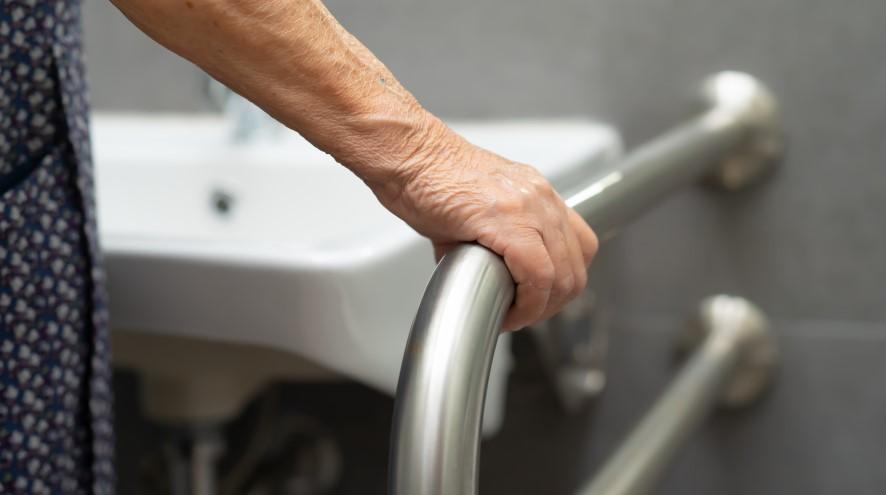Toileting and incontinence
Dementia can affect many aspects of a person's daily routine, including toileting and incontinence. This can be an awkward subject because it can be difficult to accept help in this intimate area of our lives, particularly from someone we’re close to.

In some situations, bowel or bladder control issues may be preventable. If toileting becomes a challenge, try the following suggestions to help with your specific situation:
Helpful tips
- Make an appointment for the person with dementia to have a full medical assessment to rule out infections, treatable conditions and to review medications.
- Make the toilet easy to find: clearly mark the path on walls and/or floors; ensure that there are no obstacles; label bathroom doors with words or a picture of a toilet.
- Use a contrasting coloured toilet seat. Coloured tape around the perimeter of a toilet or coloured water may prevent accidental misses due to perceptual or visual losses.
- Provide good lighting by ensuring that the bathrooms and hallways are well lit.
- Use a commode or a urinal in the bathroom.
- Install hand rails beside the toilet, and a raised toilet seat to make sitting down and getting up easier.
- Consider removing any door locks as the person may not be able to unlock the door without assistance.
- For men, try putting a decal inside the toilet bowl to have something to “aim at.”
- Put lids on waste paper baskets and other containers that may be mistaken for toilets.
- Accidents happen. Stay calm and try to ease any embarrassment the person might be feeling.
- If accidents happen during the night, consider having a commode in the bedroom. Unless it is necessary, do not wake up the person during the night.
- Keep the person dry and clean. If accidents continue, disposable underwear, panty liners (for women) or protective bedding might be helpful. Use them only if necessary.
- Watch for visible cues that the person needs to use the bathroom. For example, the person may get restless, make unusual sounds or faces, or pace around the room.
- Give the person reminders to go to the toilet regularly, perhaps every two hours or before going out.
- Choose easy-to-remove clothing, such as velcro closings or elastic waists.
- Give a cue to get started, such as running water, prompting, or demonstrating what to do.
- Direct the individual to the front of the toilet before removing clothes.
- Hand the person toilet paper to use as needed. You may need to help the person get started with wiping. Using wipes can be easier than toilet paper if you need to wipe for them. Remember to have disposable gloves on hand.
- Distract the person if staying seated is a problem by playing music or providing a favourite item to look at or hold, like a book or a magazine.
- Give the person some privacy, but stay nearby. Explain that you are “just outside the door if anything is needed.”
- If you leave the person alone in the washroom, make sure that there are no medications or dangerous objects that the person could have access to.
- Watch for redness or skin breakdown of the buttocks. Contact a nurse or doctor to treat this right away.
Resources
- Download our printable tip sheet When Toileting Becomes a Challenge: Tips and Strategies or connect with the staff at your local Alzheimer Society for more information and support.
- The Canadian Continence Foundation
